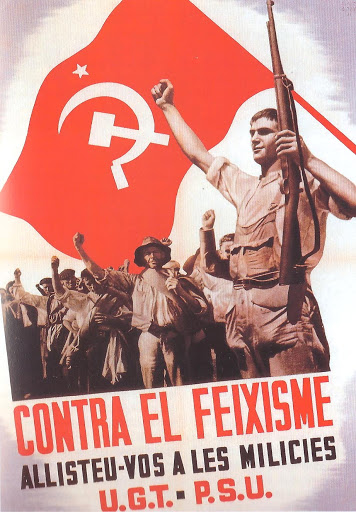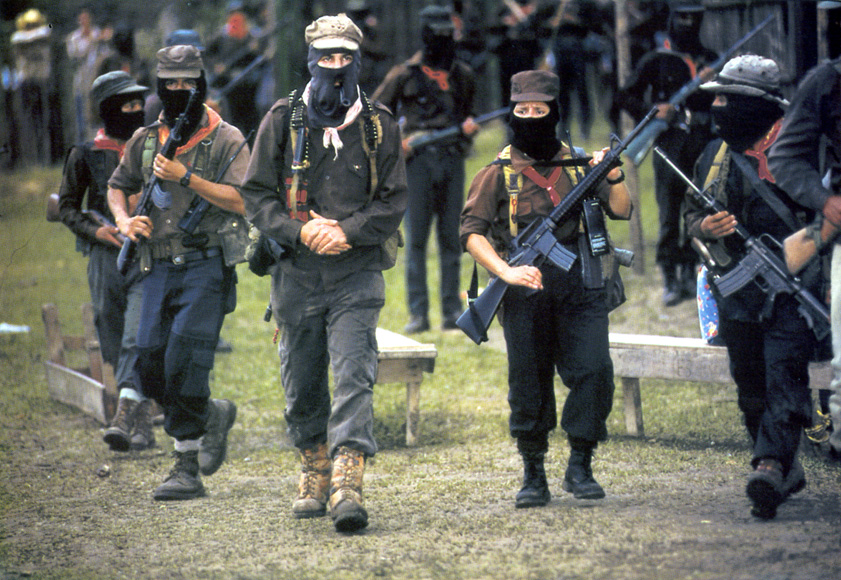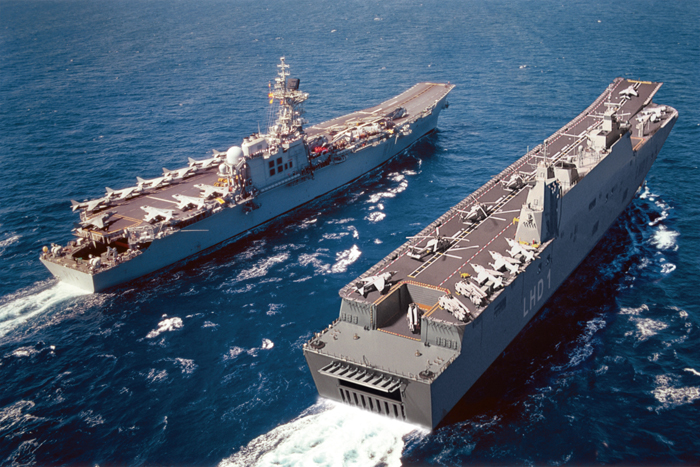History of the Refoundation of the Kingdom of EgelionThe year of our Lord 3765 marked the glorious restoration of the Kingdom of Egelion under the guidance of His Royal Majesty Juan Felipe de Montalivet y Nueva-Formoselle. This event saw the death of the politically unstable socialist and parliamentarian Republic of Egelion, that was headed by the weak Elio Banderas of the Partido Democratico Constitutional. As President, the Hon. Banderas never knew when to be firm in his decisions and his administration saw very few reforms. Juan Felipe was a bright young man that rose to the political stage for his involvement in federal lawmaking and his career as a jurist. He was well respected by the intellectuals and the working middle class who, in a political rally in 3764 made him the head of what would become the Partido Monarquico. Amidst the deep economic crisis and the bankruptcy of the central Bank, he won virtually unopposed and was nominated King in 3765. Immediately his government reformed the budget and mad either government smaller, modified environmental laws and military laws. These two gave him the support of the military and the commercial sectors of the economy. Finally, a major reform was that of the Church, with the reformation of the Selucian Patriarchal Church in Egelion in 3767. He gave it freedom and independence form the state, that made the Church more pure and with a greater impact in the population. Since then, the Church always was a big supporter of the Monarchy. As a coronation of his brilliant political operations, the country was renamed Reino de Egalion in 3767.
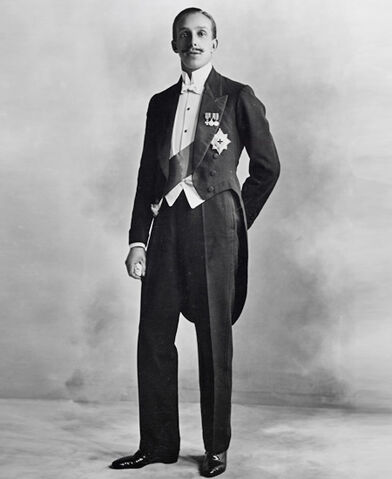
A young Juan Felipe
The Monarchy gave guidance and unity to the Nation, while preserving democracy and free speech; this made king Juan Felipe much beloved throughout the nation over his long reign. Yet, republican sentiment did not die and it arose strongly during his tenure. A major change in the life of the Kingdom happened in 3785 when three parties other than the Partido Monarquico: the Partido Liberal Republicano, that represented the republican and anti-clerical sentiment, the Selucian Union, that represented the right wing conservatives, and the short lived Alianza Roja. The 3785 elections for the Cortes were still won by an overwhelming majority of the Partido Monarquico, but they planted the seed of discontent. Both the PRL and the SU attacked the PM, the first because of its conservative and clerical aspects, the second for its liberal reforms. The SU generally fllowed the PM in its conservative and moralistic stance against the PRL. In May 3791 the Partido Liberal Republicano took the majority of seats (65%) in the Cortes Generales by consolidating the progressive and liberal vote. In Caille, a progressive and independent province traditionally opposed to the Selucian Church, the PRL obtained almost every vote and 16 seats on 16. The only province with a PM majority was Eder Gira, where there was a strong sentiment for the Monarchy.
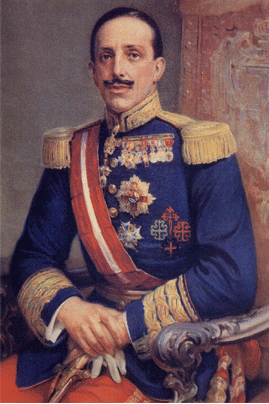
Juan Felipe, King of Egelion from March 3765 to February 3792.
The conservative vote instead was split between the PM and the SU, with the latter being the more conservative. What followed this election became the cause for the downfall of the Monarchy. The PRL had an overwhelming majority of votes, but not 2/3. In order to obtain those it formed an alliance with the SU on capitalistic basis. Although the PM was for free trade, it still maintained the idea of some government control, that both PRL and SU wanted to relinquish completely. the PRL gave up its anti-religious stance as a compromise and before the PM knew it, the PRL and SU formed a coalition that reinstated the Republic. The new cabinet was split between the two parties and the two parties deeply reformed the republican institutions. This political alliance was seen as a betrayal by the PM, that until then had considered the Selucian Union its ally. Although it was hailed as a political success by the PRL, the next elections in 3793 instead showed a very different picture. All three parties received about the same number of votes; the SU had gained a lot while the PRL lost many and the PM stayed unaltered. This was probably seen as the voters of PRL saw the union with the SU as a betrayal. Interestingly, Juan Felipe was reelected as President, because the majority of SU voters preferred him in the second round to the anti-clerical and republican Jose Miguel Arias. After this election, the PRL changed strategy and collided with the SU on key topics as civil rights and morality, where the SU sided with the conservative PM. Yet, the PM was still without a strong guidance since Juan Felipe dedicated himself to the government.
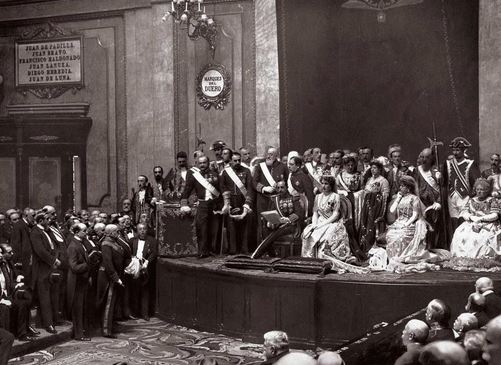
Juan Felipe at his last assembly as King.
The 3795 election were a huge upset for the nation: Jose Arias won the presidential election with 52% of votes. These SU almost dissipated, since conservatives had understood how negative the SU's choices had been for the Church and morality. For the first time since 3764, Juan Felipe was not in charge. Many witnesses report that this affected him deeply, and that for many weeks he fell into depression, considering this event the failure of his mission. Yet, he re-found his strength and lead the PM in the next two years, and under his leadership the tensions between RLP and PM calmed down, and many bilateral free market laws were passed. The comparison between this strong character and the feeble and indecisive Carlos Domingo was striking, and the elections of 3797 gave the presidency one again to Juan Felipe. The PM also went very close to reaching the number of seats of the PRL. The SU maintained its niche of conservative electorate, but in 3798 the party disassembled and most of its voters went into the PM, that caused the 3799 elections to be won by the PM with a 55% of votes. This majority was significant but not strong enough to reestablish the Monarchy. In 3801 Juan Felipe lost the presidency for a meager 1019 votes(out of more than 50 million voters), but he readily regained it in 3803, when elections confirmed the PM's majority that ended up in with 60% of the seats in the Cortes.
After this major success, Juan Felipe shocked the Nation and the international community by declaring his retirement and his abdication as head of the House of Montalivet y Nueva-Formoselle in favor of his son Carlos Domingo.
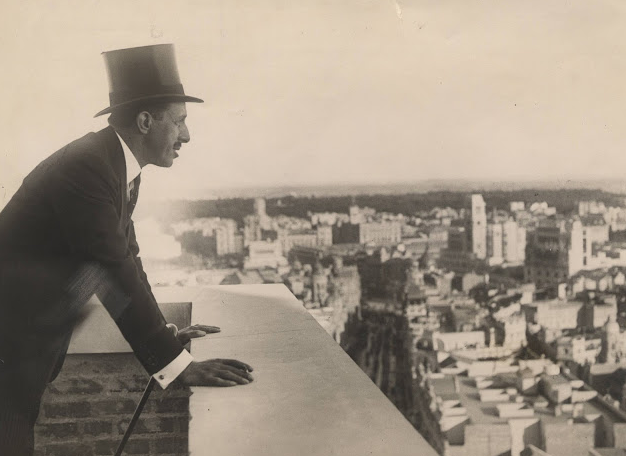
Juan Felipe observes Demar Solad a few days before his retirement
A large parade accompanied the King to his last session in front of the Cortes and many foreign representatives came to assist. After he resigned, Juan Felipe retired himself to the royal villa of Henarejos in southern Amateria. A huge celebration was held in Demar in honor of he who the majority of the population still refereed to as "King". The keys of Egelion were now in the hand of his first born son, Carlos Domingo.
